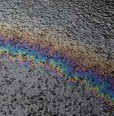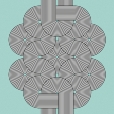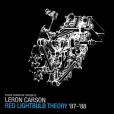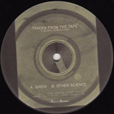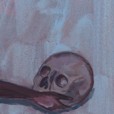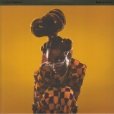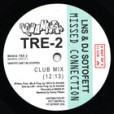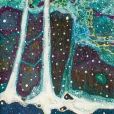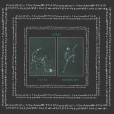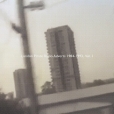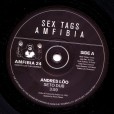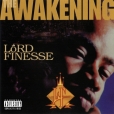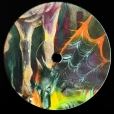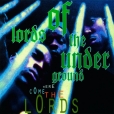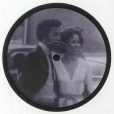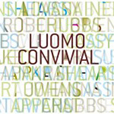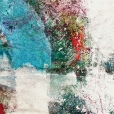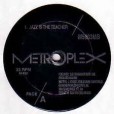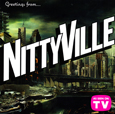Your basket is empty

“This is killer,” says Ben UFO.
Spherical collections of stars form around black holes in situ; that is, locally to their cosmic neighbourhoods. It is said that future space colonization will rely on sourcing supplies in situ. Construction in situ uses raw materials at the site: colossal sculptures such as Naqsh-e Rustam, the Leshan Giant Buddha and Mount Rushmore were built in this fashion.
Wild, organic machine grooves, with a mind’s eye on naked treetops and an early sunset. Melody breathes out from dubwise fx, percussion by turns sinewy and floating, sub blasts and stripped synth arrangements. Keys on air.
Spacious, witty, melancholic, deadly.
‘Swooping, sub-heavy sci-fi from Riz Maslen, under a new moniker.
‘Heavy-lidded and ethereal, its balance of bass weight, mechanical metre, and darkly tinted new age feels like a cinematic re-approach to some of the textures, moods, and themes of her 1996 Laundrophonic maxi, under the alias Neotropic.
‘Stairway 13 folds in decades of experience in sound design and theatre, along with shards and elements abstracted from Riz’ more recent folk-like music, zoning into a deep, retreated, altogether dreamlike and expansive atmosphere. The scale and soundscape is reminiscent of Geinoh Yamashirogumi and their Ecophony album series, resonating to similar frequencies and exploring themes of chaos and rebirth in feature-length form.
‘The four parts spread and swoop as single extended sides across this double LP. Carried by waves of sub bass and heavenly chorus, and later punctuated with autonomic clicks of machinery, whirrs, and pulses, the work forms a gothic, otherworldly ambience. A subtle space opera.’
Killer, vintage Detroit house — lowdown and stepping, and homemade the old-fashioned way, with cassette overdubs, no sequencing. Prepared by Omar S from Leron’s tapes.
Previously unreleased house from southside Chicago, 1989.
For a moment the room appeared to darken, as it used to do when he was about to perform some singular experiment, and in the darkness the peacocks upon the doors seemed to glow with a more intense colour…
Infectious, party-hearty, yes yes y’all rapping, from deep in the early-80s.
Peter Brown’s in-house Land Of Hits Orchestra gives up the instrumental, on the flip.
His treasurable third solo LP in three decades of collaborative work as Vilod, the Moritz Von Oswald Trio, Non Standard Institute, Sun Electric, Ambiq, and company.
‘Max at his most exhilarating, morphing through bittersweet and optimistic soundscapes to bleak moments of throbbing unease — all while maintaining a musical grace and elegance. Petrichor is a reflection of Loderbauer’s impactful trips to the mountains, and returning from these summits with an electrifying urge to paint this mighty perspective. The harmonies and melodies on the tracks simulate emotional peaks and valleys, with vibration and rhythm rooted in the foundation of the sound, as though woven into the fabric of the fauna and flora.’
‘The second of our odes to soundsystem culture. Logos back-burners the weightless sound for a minute and brings forward a chop-up laced with such tasty ingredients as the Bloom-era Aardvarck white labels, Shed’s Panamax Project and Wormhole-era Ed Rush and Optical.
‘To cap it off, Ossia delivers one of the heaviest remixes of the year. The ice-cold grime sensibilities of Eska infused with the militant sound of early Aba Shanti I on that Jah Lightning album.’
The first volume in a two-part collection of pirate radio adverts & idents, assembled from home recordings of London stations made between 1984 & 1993.
Captivatingly decentred, ghostly dubscapes, unhurriedly rolling out elements of jazz, reggae and — yep — Estonian folk music, with suspenseful toms, groovy double bass and punky-reggae guitar, and some lovely xylophone and accordion playing. Have a listen.
Gospel house the Detroit way. Plus a tough techno-jazz bubbler, and Billy Love in soulful ecstasy, school of Marvin Gaye.
“In the beginning of the pandemic we decided to take a turn and move to a small beach close to São Paulo, right in the middle of the rain forest… water definitely took a major role in our lives. We were living right in between the ocean and a waterfall, it´d rain for days on a roll sometimes and it was an open house where we had the sound of rain 360 degrees around us… I kinda think our music has a little of those different dynamics of water in its different states. Also, it might seem strange but São Paulo is a city in the water too, and it has a very chaotic relationship with it.”
‘The music itself is difficult to pin down: always kinetic and driven by fluid, nimble percussion, with a freeness to the sound overall, but also discipline, as the pair harness and channel the elemental force from which they’ve drawn their inspiration. At times the lines between Takara’s skittish percussion and Boregas’ idiosyncratic synth work and sound manipulation blur into flowing rivers or torrents of sound — here, both water and sound have the ability to awaken in us different memories, and emotional or physical states.
‘We could say say their sound contains clear influences from jazz, classic dub, krautrock, and the outer limits of post-punk. Contemporary allies include Holy Tongue, Shackleton, Oren Ambarchi…’
Greetings From Nittyville.

